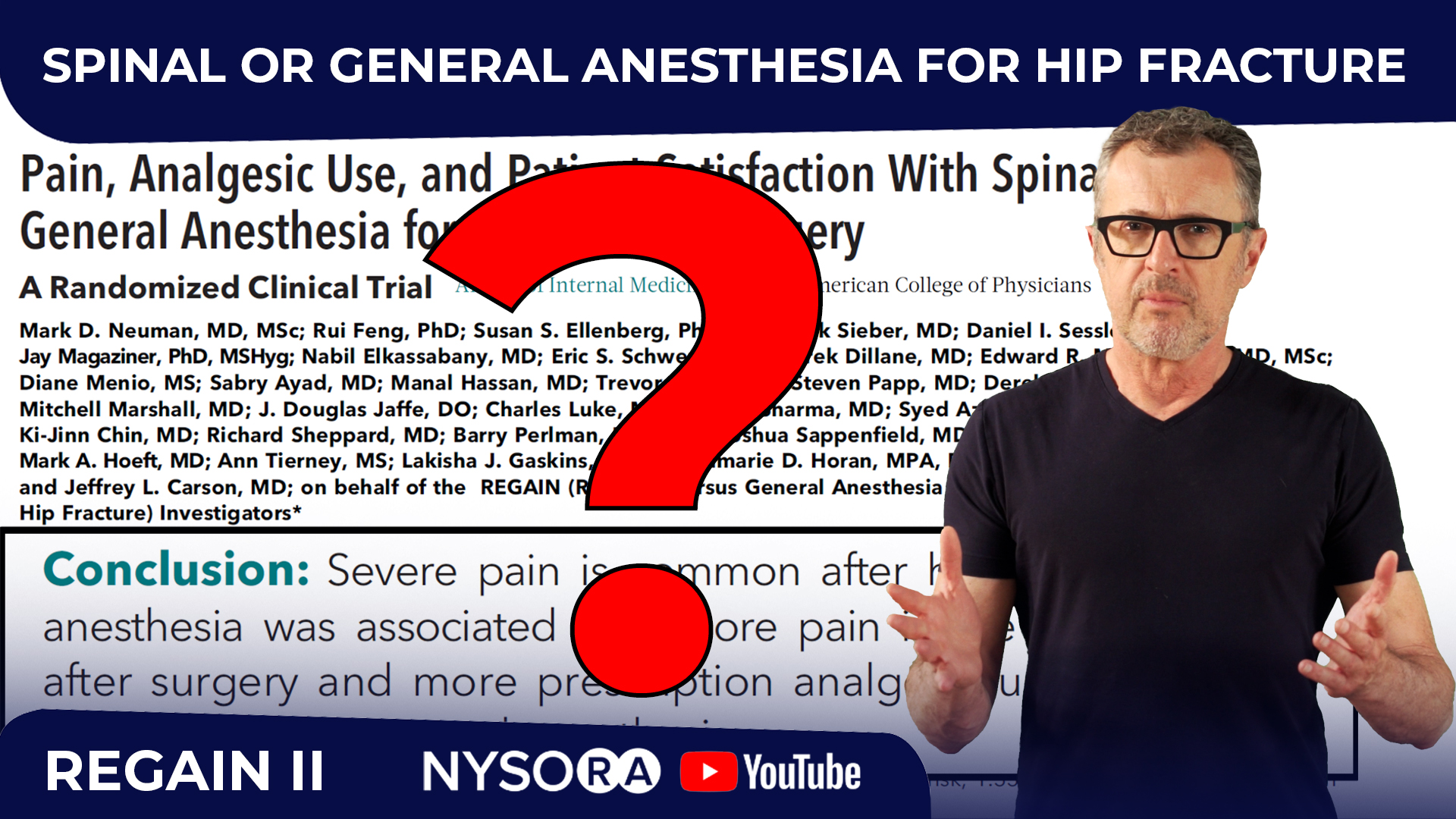- Joined
- Jan 4, 2022
- Messages
- 336
- Reaction score
- 510

SPINAL OR GENERAL ANESTHESIA FOR HIP FRACTURE - NYSORA
I invite all of my anesthesiology colleagues, particularly those with expertise in regional anesthesia, to act now to atone the conclusion of the studies on Spinal versus General Anesthesia for Patients with Hip Fracture that is, potentially, harmful, both to our patients and to our profession...
Maybe already posted but I didn't see it.
What do you think?